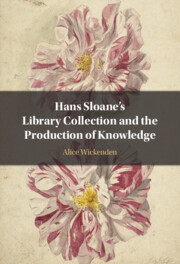Book contents
- Hans Sloane’s Library Collection and the Production of Knowledge
- Hans Sloane’s Library Collection and the Production of Knowledge
- Copyright page
- Contents
- Illustrations
- Tables
- Acknowledgements
- Introduction
- Chapter 1 Hans Sloane’s Library
- Chapter 2 Plants and/as Books
- Chapter 3 Repeating Books
- Chapter 4 Unreadable Books
- Chapter 5 Image Books
- Conclusion
- Appendices
- Bibliography
- Index
Introduction
The Creation(s) of the British Library
Published online by Cambridge University Press: 20 November 2025
- Hans Sloane’s Library Collection and the Production of Knowledge
- Hans Sloane’s Library Collection and the Production of Knowledge
- Copyright page
- Contents
- Illustrations
- Tables
- Acknowledgements
- Introduction
- Chapter 1 Hans Sloane’s Library
- Chapter 2 Plants and/as Books
- Chapter 3 Repeating Books
- Chapter 4 Unreadable Books
- Chapter 5 Image Books
- Conclusion
- Appendices
- Bibliography
- Index
Summary
The introduction sets out the history of the establishment of the British Museum and the subsequent creation of the British Library as a separate institution. It goes on to explore book collections in the early modern period, referring to writings by Edmund Spenser, Thomas Browne, and Francis Bacon. It argues that the library has never been defined as a place where books are wholly set apart and that they should instead be seen as part of wider collections. It looks at the place of books within cabinets of curiosity, arguing that books both belong in and yet are still somehow different from wider collections. Finally, it argues that the distinction of a book from an object can be unwieldy and dependent on the reader. It ends by proposing that Hans Sloane’s collection is the ideal place to think through what an institutional library is, and what it means to use books.
Keywords
Information
- Type
- Chapter
- Information
- Publisher: Cambridge University PressPrint publication year: 2025
